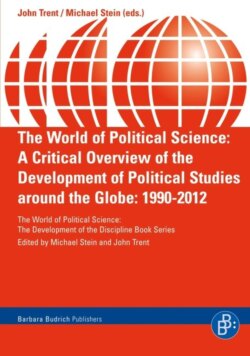Читать книгу The World of Political Science - Группа авторов - Страница 13
На сайте Литреса книга снята с продажи.
3.3. Key Framing Questions
ОглавлениеIn the post-1945 period, one can discern three distinctive turning points in terms of key framing questions: 1945, 1975 and 2005 (Inoguchi 2005a). By ‘framing’ questions I mean those questions that drive political scientists to think and argue about something. After all, key framing questions reflect what they regard as their problematiques. 1945 was a new beginning. The key framing question for the period between 1945 and 1975 was: what went wrong with us? I am refering here to the defeat and disaster of the Second World War. During this first period, political history covering the period leading of 1945 dominated their writings, and political philosophers wondered what they could learn from Western political principles and institutions. The period starting roughly in 1975 and ending in 2005 had one key framing question: what are the distinctive features of Japanese politics? Is it really unique? Is it really an odd outlier in comparative politics? This second period is an era of Japanese politics. It coincides with the rise and decline of Japanese self-confidence in a sense. The period starting in 2005 seems to be another distinctive period, in that some common features are sought in relation to Japanese politics. In the first period Japan was portrayed as an “odd and bad guy” amongst major powers. In the second period Japan was a rara avis among industrial democracies, despite high income levels. In the third period, Japan is increasingly portrayed as an ordinary country with features common to others. Which features do Japanese politics have in common and with which other country groups seems to characterize many questions posed by political scientists in the third period. If the first period asked a framing question as if political scientists were framing a Constitution by themselves, and if the second period asked a framing question as if political scientists were dissecting their own body, the third period asked a framing question as if political scientists were finding friends from near and afar in search of a better understanding of themselves. Symbolic of these self-transformations are the three representative journals carrying the zeitgeist, the essential spirit, of each period. The first period was best represented by the Nempo seijigaku with its critical and liberal spirit. The second period was best represented by the Leviathan journal with its strong commitment to empiricism when dissecting our own malaise. The third period seems to be best represented by the Japanese Journal of Political Science, with its intensely comparative outlook, carrying articles on East Asia as well as international relations in the region of the Asia-Pacific. However, this third period has barely started.
